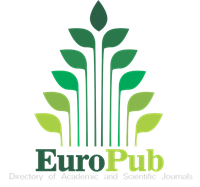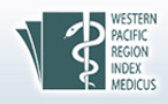Abstract:
Objective To understand health risk behaviors and associated factors among middle school students in Wuling ethnic areas.Methods Using multi-stage stratified cluster sampling method,2 360 Tujia and Miao adolescents were recruited from 8 cities and rural high schools of four counties in Xingxi Tujia and Miao Autonomous Prefecture from November to December 2014.Questionnaire survey was conducted to collect health risk behaviors.Non-conditional Logistic regression analysis was used to analyze the possible influencing factors of health risk behaviors.Results Reported rates of picky eating behavior,physical inactivity,suicidal ideation,smoking,drinking and internet addiction were 29.11%,58.94%,19.49%,20.04%,26.36% and 6.02%,respectively.Logistic regression analysis result showed that risk factors for picky eating behavior included the only child(OR =1.562) and internet addiction(OR=2.219),while the protective factor was being boy(OR=0.695)(P<0.01).Risk factor for physical inactivity was high school(OR=1.452),in residence (OR=1.291) and suicidal ideation (OR=1.494) while protective factors included being boy(OR =0.513),average school record(OR =0.750) and superior school record(OR =0.689) (P<0.01).Risk factors for suicidal ideation included high school(OR=1.419),smoking(OR=1.857),felt lonely (seldom or sometimes OR=1.529;often or always OR =2.366),depression (OR =2.694),feel unsafe at school (seldom or sometimes OR=1.381;often or always OR=1.974) and fighting (OR =1.744) while protective factor was being boy(OR =0.542);Risk factors for smoking were being boy(OR =6.984),leftbehind experiences(OR =1.372),drinking(OR =5.810),fighting (OR =1.687) and suicidal ideation(OR =1.837),the protective factor was average school record(OR=0.580) and superior school record(OR=0.467)(P<0.05).Risk factors for drinking included Tujia minority(OR =1.708),maternal education (junior or senior school:OR =1.319;college and above:OR =2.600),smoking (OR=6.678),depression (OR=1.524) and fighting(OR =1.878),the protective factor was superior school record(OR=0.666) (P <0.05).Risk factors for internet addiction included being boy(OR =1.970),picky eating behaviors (OR =2.013),insomnia (seldom or sometimes:OR =1.949;often or always:OR =2.322),smoking(OR =1.525),suicidal ideation (OR =2.471) and frequent game playing(OR=3.071),the protective factor was school record(average:OR =0.624;superior school record:OR =0.395)(P<0.05).Conclusion Students with poor academic performance are more likely engaged with multiple health risk behaviors.Comprehensive actions should be taken by school,family and society emphasizing prevention and intervention at the same time.











